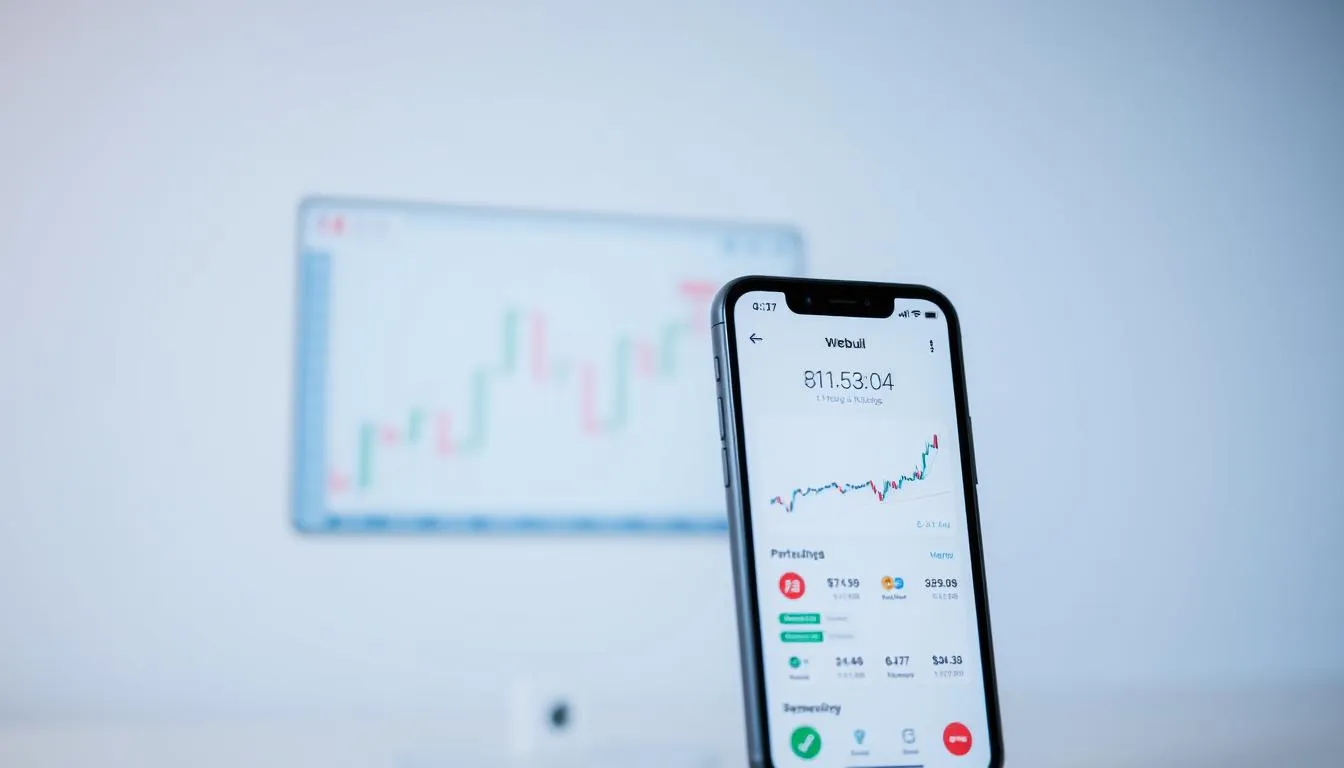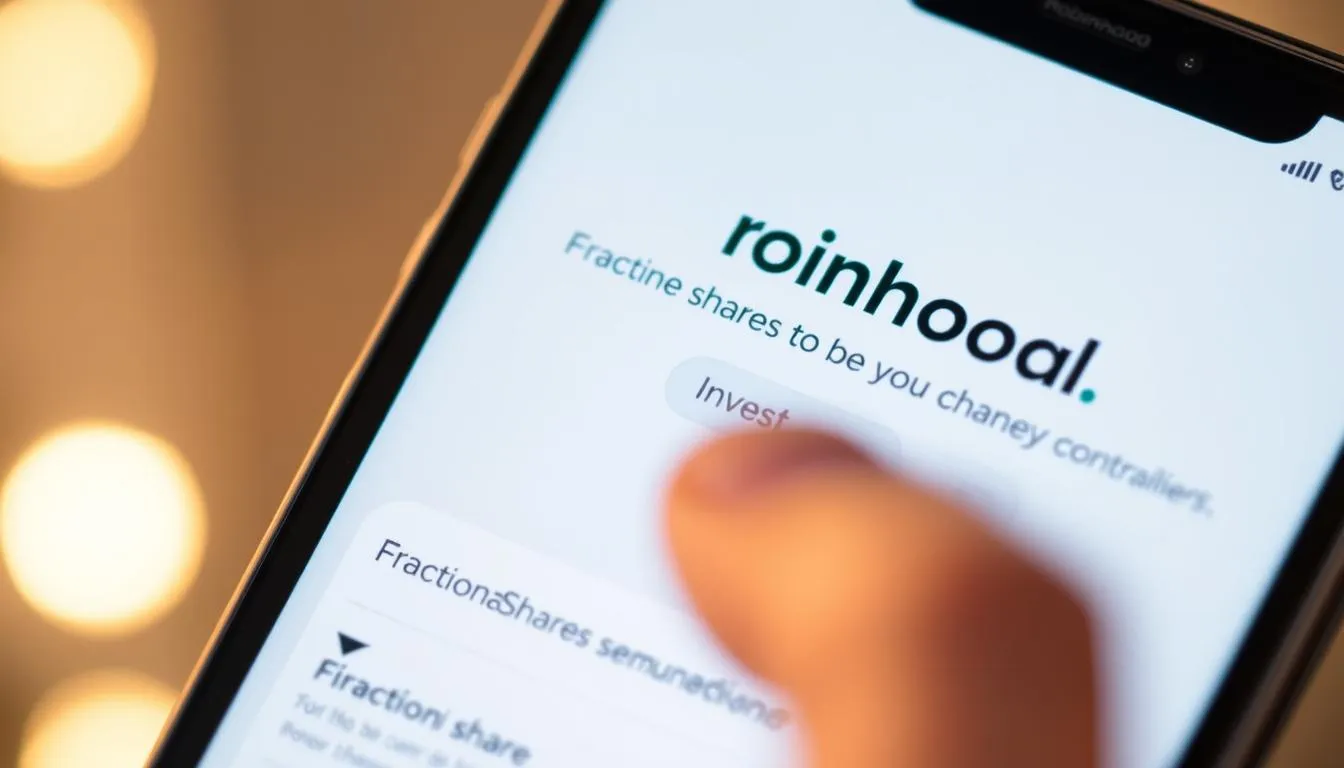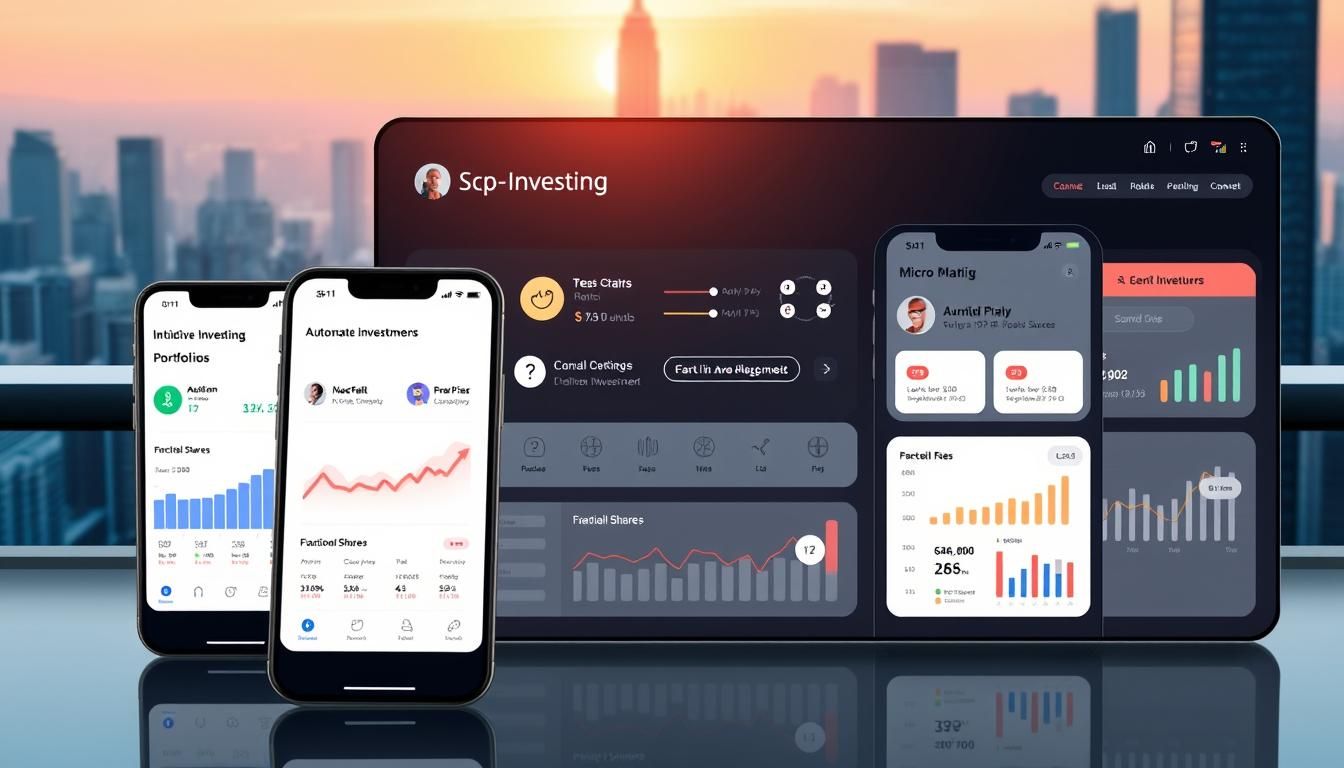Surprising fact: Nearly one in four Americans start investing with less than $50, often by rounding spare change from everyday purchases.
Todays micro-investing apps make it simple to turn loose change into a growing portfolio. Webull, Robinhood, Interactive Brokers, Stash, and SoFi let users buy fractional shares, set recurring deposits, and trade stocks and ETFs with low or no commission.
That ease matters for beginners who want to get started without big deposits. These services support rounding spare change and automated portfolios so small, steady investments build over time.
In this roundup, we focus on the features that matter: account rules, fees, access to funds, and educational resources. Youll also see where brokerage-style tools and paper trading help users practice before risking real money. To track your micro-investing progress alongside other financial goals, consider using top money manager apps for budgeting and savings.
Key Takeaways
- Many apps enable investing with just a few dollars via rounding spare change and fractional shares.
- Look for low fees, recurring deposits, and clear educational resources for beginners.
- Compare access to stocks and ETFs, account requirements, and brokerage tools.
- Automated portfolios and thematic ETFs help match goals and time horizons.
- Practice with paper trading to reduce risk before making larger investments.
Micro-investing today in the United States: how spare change and fractional shares help you get started
Small, regular contributions can turn everyday rounding into a meaningful investment habit.
Many apps let users round up change from everyday purchases and funnel that spare change into an investment account. This steady approach removes the pressure to time the market and makes saving automatic.
Fractional shares let investors buy portions of high-priced stocks and ETFs. That lowers the barrier to entry so a few dollars per month can buy exposure to well-known companies and diversified funds.
Recurring deposits automate contributions so money moves from your bank to stocks or ETFs on a schedule. Over time, small amounts compound and build a portfolio. This approach aligns with broader automation strategies covered in our guide to savings automation that can simplify your financial future.
- Fractional shares enable slices of popular stocks and etfs for low-cost exposure.
- Spare change features channel micro-amounts into investments without extra effort.
- Recurring deposits keep investors consistent and reduce emotional trading.
| Feature | Benefit | Typical users |
|---|---|---|
| Fractional shares | Access to expensive stocks with small sums | New investors, budget-conscious users |
| Round-ups | Automatic micro-contributions from change | Busy savers and habit builders |
| Recurring deposits | Consistent investing and dollar-cost averaging | Long-term savers and retirement planners |
How we evaluate small-investment apps for this product roundup
To judge these services, we focus on cost, access, and how easy they make steady investing.
Fees, commissions, and account minimums
We prioritize low and clear fees because small balances lose value fast when costs are high. We check for commission-free trades, any monthly charge, and whether an account requires a minimum deposit.
Investment options: stocks, ETFs, fractional shares, and auto-deposits
Our scoring gives weight to broad investment options like stocks and etfs, fractional shares, and recurring deposits that let users invest per month.
User experience, educational resources, and beginner-friendly features
A clean interface and intuitive app matter for beginners. We also review tutorials, webinars, and tools that explain risk and the market.

“Our goal is simple: find services that keep costs low, offer clear access to investments, and help new investors build confidence.”
| Criteria | Why it matters | What we test |
|---|---|---|
| Fees & commissions | Preserves growth for small balances | Commission rules, monthly charges, hidden fees |
| Account rules | Ease of entry and withdrawals | Minimums, transfer limits, funding speed |
| Investment options | Diversification and flexibility | Stocks, ETFs, fractional shares, auto-deposits |
Tip: For a deeper guide on getting started and comparisons, see our recommended resource at micro investing guide.
Webull: commission-free trading app with advanced tools for small investments
For investors who value data and flexibility, Webull offers extended hours, paper trading, and powerful charting.
Key features
- Commission-free trading on stocks, ETFs, and options with robust real-time market data.
- Advanced charting, indicators, customizable watchlists, and alerts to track positions.
- Paper trading lets beginners test strategies with virtual money before using a live account.

Costs and access
Webull charges no commissions for most trades and has no monthly platform fees. That keeps fees low for small balances and helps investments grow per month without drag from costs.
Who its best for
The app suits beginners who want to practice and active investors who need market depth. Account setup is streamlined, and community forums plus educational content support learning and smarter investment choices.
“Webull combines pro-level tools with easy access so users can trade, learn, and scale investments over time.”
Want to learn about fractional shares on Webull? See their details on fractional shares.
Robinhood: fractional shares and a simple interface to invest a few dollars at a time
If you want a fast, no-friction way to invest a few dollars, Robinhoods clean app often fits the bill.

Core advantages
Zero-commission trades let users buy stocks, ETFs, and options without per-trade fees. The mobile-first design speeds setup and order entry.
Fractional shares enable buying portions of high-priced shares. That makes it easier to build a diversified portfolio per month with small deposits.
Why it appeals to new investors
The interface is simple and the in-app educational content helps beginners learn market basics. Fast account access and clear displays reduce friction to the first trade.
Considerations as you grow
While great for casual investing, more active traders may miss advanced charting and desktop tools. Think about your goals before scaling complex strategies.
| Feature | What it offers | Best for |
|---|---|---|
| Costs | Commission-free stock & ETF trades | Small, frequent investments |
| Fractional shares | Buy partial shares of expensive stocks | Beginners building holdings with little cash |
| Tools | Mobile interface, basic research, educational content | Casual investors who value simplicity |
“Robinhoods mix of low fees, fractional shares, and simple design makes it a fast entry point for investing.”
Interactive Brokers: broad market access with competitive pricing for growing portfolios
Interactive Brokers connects small investors to global markets without forcing large minimums.
Interactive Brokers offers trading on more than 150 markets across 34 countries. You get access to stocks, options, futures, and forex so you can diversify beyond domestic etfs and shares.
Global reach and product mix
The brokerage supports many international markets and products. That means investors can explore US and foreign stocks plus derivatives on one account.
Cost and account rules
No account minimums and competitive fees make this platform attractive for people adding to a portfolio per month. Commissions are generally low for small trades.
Tools, app, and resources
The trading toolkit includes advanced order types, options analytics, and research resources. A robust app mirrors the desktop so users can check markets, place trades, and track investments on the go.
- Global access: 150+ markets for diversified investing.
- Low entry cost: no minimums and competitive fees.
- Advanced tools: analytics, options models, and educational resources.
“Interactive Brokers pairs wide access with cost efficiency, making it a fit for growing portfolios that value choice.”
| Feature | What you get | Best for |
|---|---|---|
| Market access | 150+ markets in 34 countries | Diversifying beyond US stocks and etfs |
| Costs | No account minimums; competitive commissions | Investors contributing per month and scaling positions |
| Tools & resources | Options analytics, research, mobile app | Users who want professional-grade trading and learning |
Stash: recurring deposits, themed ETFs, and guidance for first-time investors
Stash helps new investors build a steady habit by letting them start tiny and automate growth. The app allows users to begin with as little as a cent and set up recurring deposits to add to investments on a schedule. That low barrier makes it easy for beginners to join without a large upfront sum.
Low barriers and easy automation
Start small: Stash allows users to open an account with one cent. You can schedule deposits per month to stay consistent without thinking about it.
Investment choices that match interests
Stash offers a mix of stocks, etfs, and themed funds, like AI or gaming options. This helps beginners align investments with personal interests while keeping diversification in mind.
Learn while you invest
The app includes educational resources and in-app guidance that explain allocation, risk, and how to build a balanced portfolio. Fractional shares let users own parts of expensive stocks, so learning happens with real stakes but small funds.
- Automated deposits: steady contributions per month build habits.
- Themed etfs and stocks: align investments with interests.
- Guided learning: tools and content help beginners allocate and track progress.
| Feature | Why it matters | Best for |
|---|---|---|
| Start amount | Open with as little as $0.01 | Beginners testing investing |
| Recurring deposits | Automates saving and dollar-cost averaging | Users who want steady per month growth |
| Themed ETFs | Interest-based exposure with diversification | Investors seeking thematic funds |
“Stashs approach emphasizes consistent investing, education, and small steps that add up.”
Want deeper details? Read our full Stash review for a hands-on look at fees, tools, and account features.
SoFi: integrated banking and investing with automated portfolios for beginners
SoFi combines banking, lending, and investing in one friendly app. This integration helps beginners manage cash flow, loans, and long-term plans without juggling multiple accounts.
No account minimums and no commissions on stocks and ETFs
No account minimums make it easy to start. Trades for stocks and ETFs are commission-free, so small deposits can stay focused on growth.
Automated investing and access to diversified portfolios
SoFis automated investing builds diversified portfolios using low-cost funds. The app guides risk choices and allows users to set recurring deposits to invest per month.
Member benefits: educational articles, webinars, and financial advice
Members get access to a library of educational resources, live webinars, and on-demand financial advice. These tools help beginners learn allocation and long-term planning.
- Bundled services: banking, loans, and investing in one place for easier money management.
- Simple automation: recurring deposits and automated portfolios to grow funds steadily.
- Beginner-friendly tools: fractional shares, guidance, and member resources to build confidence.
“SoFi balances convenience with diversified portfolios so new investors can scale their investments while growing financial wellness.”
Compare top Micro-investing platforms
Not all apps treat tiny contributions the same; review pricing, tools, and entry rules before you commit.
Fees and pricing: commissions, monthly costs, and account requirements
Fees vary widely. Some services charge no commissions while others add per month fees or account maintenance charges.
Check commission schedules and any minimum account rules that could eat into gains when you add small sums per month.
Micro features: spare change round-ups, fractional shares, and recurring deposits
Spare change round-ups and fractional shares make it simple to build holdings without large deposits.
Look for recurring deposits that let you set a cadence per month and the flexibility to change contributions as your budget shifts.
Platform experience: mobile interface, research tools, and support
A clean interface and fast app matter. Research tools and learning resources help beginners understand risk and portfolio choices.
Also evaluate customer service, webinars, and help centers for practical support when questions come up.
Best for: beginners, active traders, long-term investors
- Beginners: prioritize low fees, guided tools, and education.
- Active traders: value execution quality, order types, and trading tools.
- Long-term investors: need low ongoing costs, broad access to stocks and ETFs, and portfolio guidance.
“Match features and flexibility with your goals whether you round up change everyday purchases, use fractional shares, or set recurring deposits.”
| Focus | What to check | Why it matters |
|---|---|---|
| Fees | Commissions, per month charges, account minimums | Small contributions are sensitive to fees; lower costs preserve growth |
| Micro features | Round-ups, fractional shares, recurring deposits | Ease of building positions and maintaining consistency |
| Experience | App interface, research tools, support resources | Improves decision-making and reduces friction for investors |
| Access | Stocks, ETFs, options, international markets | Lets you expand strategy as goals and risk tolerance change |
Conclusion
, A clear plan, low-cost tools, and steady deposits make it easy to turn modest contributions into long-term gains.
To get started, pick a platform with the features that match your budget, time, and comfort level. Then invest consistently per month so small deposits can compound into a portfolio.
Prioritize low fees, easy access to stocks and ETFs, and fractional shares so your money goes further. Use in-app education and advice to manage risk and learn the market.
As goals change, choose services that let you grow into more advanced brokerage tools, research, and products. Over time, steady investing builds diversified portfolios and meaningful progress toward your financial goals. For those interested in sustainable investing options as portfolios grow, explore our analysis of the rise of ESG investing popularity in modern portfolios.
FAQ
What is the easiest way to start investing small amounts of money?
The simplest route is to link a checking or debit card to an app and enable round-ups or recurring deposits. Round-ups save spare change from everyday purchases and transfer it into an investment account. Recurring deposits move set dollar amounts on a schedule, making saving automatic and building a portfolio over time.
Can I buy parts of a share if I dont have enough money for a full stock?
Yes. Many services let you buy fractional shares, which means you can invest a few dollars in high-priced stocks or ETFs. This gives access to a wider range of investment options without needing full share prices.
How do fees and commissions affect small investments?
Fees can significantly reduce returns when balances are low. Look for apps with zero-commission trades, low or no account minimums, and clear pricing for services like managed portfolios. Even small monthly fees matter, so compare costs before you deposit regularly.
Are these apps safe to use with my money?
Reputable brokerages and brokerage-style apps are regulated by the SEC and FINRA and offer SIPC insurance for securities up to applicable limits. Bank-style accounts may have FDIC protection. Always verify account type and protections in the apps disclosures.
Which types of investments can I buy with small-dollar accounts?
You can typically buy stocks, ETFs, and some funds as fractional shares. A few services also offer bonds, options, and crypto. Robo-advisors or automated portfolios create diversified funds to spread risk for small balances.
How do round-ups work and how much can they add up to?
Round-ups round purchases to the next dollar and invest the difference. If you make many small purchases, round-ups can add several dollars a week, which can grow meaningfully over months thanks to recurring deposits and compounding returns.
Do I need a minimum balance to open an account?
Many modern apps have no account minimums, letting you open accounts with a few cents or dollars. Some managed services or premium tiers may require minimums, so check each providers sign-up requirements.
How do educational resources help new investors?
Good apps include beginner-friendly guides, articles, videos, and practice accounts. These resources explain risk, portfolio diversification, and long-term strategies, helping users make informed choices and avoid common mistakes.
Can I transfer my investments to another brokerage later?
Yes. Most brokerages support account transfers via the Automated Customer Account Transfer Service (ACATS). Transfers can take several days and sometimes incur fees, especially if you move out of a managed account with sell-down requirements.
What tax implications should I expect with small investments?
Investment gains may trigger capital gains taxes when you sell, and dividends are taxable in the year theyre received. Apps typically provide tax documents like 1099s. For retirement accounts, different rules and tax benefits apply, so consider account type when investing.
Which apps are best for active trading versus long-term saving?
Commission-free trading apps with advanced tools suit active traders who need real-time data and order types. Simpler apps with automated portfolios, recurring deposits, and educational content suit long-term savers and beginners focused on steady growth.
How quickly can I sell investments and get cash back to my bank?
Selling times vary. Stocks and ETFs trade instantly during market hours, but settlement typically takes two business days (T+2). Withdrawals to your bank can take one to five business days depending on the service and transfer method.
Are there risks to investing small amounts repeatedly?
Yes. Regular small investments reduce timing risk through dollar-cost averaging, but you still face market risk and potential loss. Fees, illiquidity for certain assets, and emotional reactions to market swings also matter. Diversifying across ETFs or target-date funds helps manage risk.
How do I choose the right app for my goals?
Match features to goals: choose zero-commission trades and advanced tools for active trading; select recurring deposits, spare-change round-ups, and strong educational resources for building habits. Compare fees, available investments, mobile experience, and customer support before deciding.
